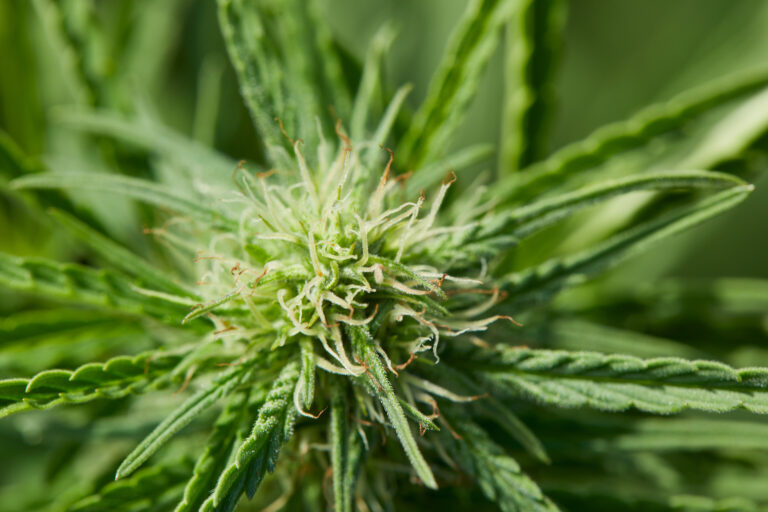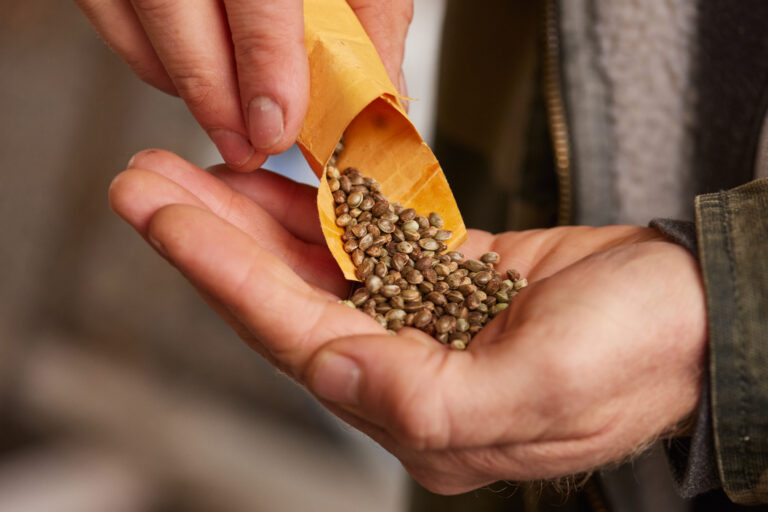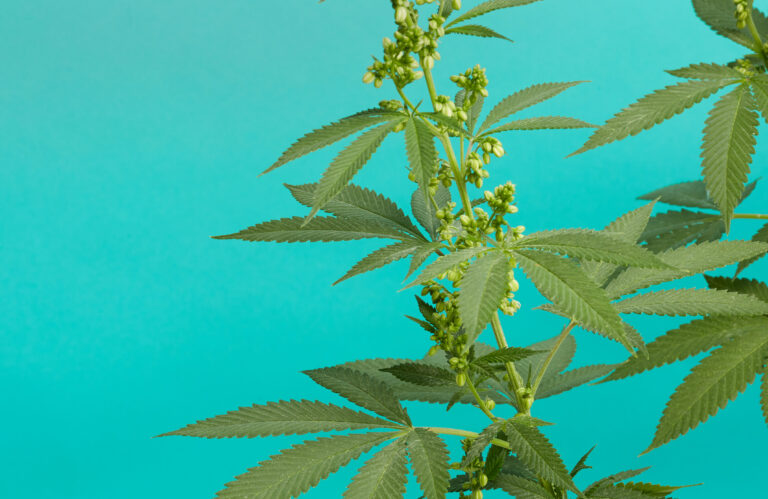Cannabis plants are dioecious, meaning they can be either male or female. Female plants are particularly prized since they form buds rich in psychoactive cannabinoids. For most growers, maintaining a crop free of male plants is critical to ensure that those female buds are not pollinated.
Like all plants, however, cannabis has an inherent drive to procreate by propagating seeds. One way it achieves this is by herming — when female plants become hermaphroditic to self-pollinate. Learn how to tell female and male cannabis plants apart, how you can prevent herming, and what to look out for if you're new to growing cannabis.
What is herming and why does it happen?
A hermaphroditic plant contains both female and male sex organs, and the tendency for cannabis plants to herm means that growers must take extra care to minimize any stressors that may cause the plant to perceive a threat and change its sex. According to Bruce Perlowin, CEO of Hemp, Inc., "Stress is the fundamental cause of hermaphroditic plants, or 'hermies.' Some examples of stressors are not enough water, too much water, not enough nutrients, or too much heat. It can happen at any time in the life cycle of a plant from a new plant to a very mature one.”
 Photo by: Gina Coleman/Weedmaps
Photo by: Gina Coleman/WeedmapsImage lightbox

The female plant will develop male flowers in response to stress to ensure seeds are produced before the environmental trigger can kill the plant. Other stressors that may incite female cannabis plants to become hermaphroditic include disruptions to the photoperiod, disease or pest infestations, the use of toxic pesticides, and physical damage from vigorous pruning.
Herming can also have a genetic component, with some growers viewing plants that are inclined to herm as genetically inferior. “Herming can also definitely be a genetic problem, but it is not cultivar-specific,” said Perlowin. “You can get the same cultivars from different seed companies, and they will yield different results.” Reputable breeders are more likely to competently sort and select seeds from genetically robust plants with desirable traits.
How can growers prevent hermaphroditic plants?
The vast majority of cannabis growers cultivate the plant to produce sensimilla, which are female cannabis buds that have not been pollinated by a male cannabis plant. Sensimilla is more potent than seeded cannabis as it contains greater concentrations of essential oils and psychoactive cannabinoids.
 Photo by: Gina Coleman/Weedmaps
Photo by: Gina Coleman/WeedmapsImage lightbox

When female plants herm — or develop male flowers capable of disseminating pollen — the entire crop is at risk of pollination. Female flowers that have been fertilized by pollen will halt their development to produce seeds, limiting flower production. Perlowin advised that growers who wish to prevent female cannabis plants from herming must be diligent throughout the plant's growth cycle. “With hemp and cannabis, you have to walk your fields or monitor your plants every single day to ensure that there are no hermaphrodites or pollen on the plants, as it will affect the rest of your grow."
"It's surprising how fast something can go wrong," he warned, "So it's important to watch closely. If you don't find these [male] plants, you could be jeopardizing not only your crops but also those of other growers.” For starters, you should purchase feminized cannabis seeds from a reputable company or trustworthy breeder who understands cannabis genetics. While potential environmental stressors must be monitored and minimized, growers should also examine their plants every day for any unusual growth.
 Photo by: Gina Coleman/Weedmaps
Photo by: Gina Coleman/WeedmapsImage lightbox

Swiftly remove any male flowers that appear in your crop. If the plant has very few male flowers, those specific flowers can be removed without removing the whole plant, but the plant will need to be watched closely. Plants with many male flowers should be eliminated entirely.
“We found that it is better to remove the entire plant than cutting off the problematic branches,” explained Perlowin. “We do this by using a large plastic bag to cover the entire plant. Without shaking the plant, we move the bag down to the very bottom of the plant, seal it, cut the plant down at dirt level, then take it off the property.”
How can you tell a male plant from a female plant?
The sex of a cannabis plant is located at the nodes along the main stem.
Male cannabis plants
Male plants can be identified most easily when they begin flowering. The flowers initially appear as a curved claw shape, which soon differentiates into a flower bud containing five radial segments. As the flowers develop, pollen sacs emerge that almost look similar to small bunches of grapes. Eventually, the sepals of the pollen sacs will open to release the pollen.
 Photo by: Gina Coleman/Weedmaps
Photo by: Gina Coleman/WeedmapsImage lightbox

"When you see a pollen sac, you will know that a female plant is turning male,” said Perlowin. “Oftentimes, you can tell before the pollen sack becomes a problem. You should examine the plant from the very bottom to the top. It's easy to spot when the pollen sacs are at the top of the plant, but be sure to examine if there are pollen sacs at the bottom.” Additionally, male plants grow taller than female plants as they mature and also have thicker stems and fewer leaves.
Female cannabis plants
Female plants usually take several days longer than males to develop pistils, or female sexual organs.
 Photo by: Gina Coleman/Weedmaps
Photo by: Gina Coleman/WeedmapsImage lightbox

The pistils look like small green seed pods and contain thin hairs called stigmas, which aid in collecting pollen and range in color throughout the growth cycle from yellow to dark red to bright orange. Female plants are also generally shorter, denser in foliage, and broader than their male counterparts.
Can you turn a male plant female?
The sex of a plant is determined by its genetics before germination even begins. With the sex genetically encoded, there is no way to make a male plant female or a female plant male. However, techniques can be used to encourage a male plant to display female characteristics. These techniques require the use of chemicals, such as ethylene, to prompt a hormonal response from the plant.
Elevated levels of female hormones in male cannabis plants can trigger female flowering development. The technique is more effective when applied to male plants that have not yet formed mature flowers. Bear in mind that many male marijuana plants are hermaphroditic plants, and distinguishing true males can be difficult.
Can you clone a female from a male?
Cloning is a process that is used by breeders to make genetic copies of robust, healthy female plants, reducing the guesswork that sometimes accompanies cannabis cultivated from seed. Feminized seeds occur as a result of inducing a female plant to herm, then fertilizing another female plant with the pollen. The pollen from the 'hermie' contains only female chromosomes, ensuring that no true males can result from the seed.
Featured image by Gina Coleman/Weedmaps




